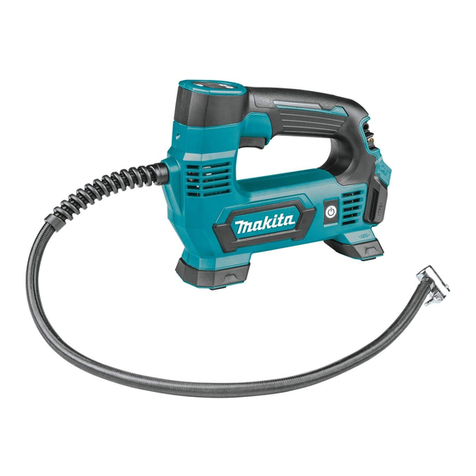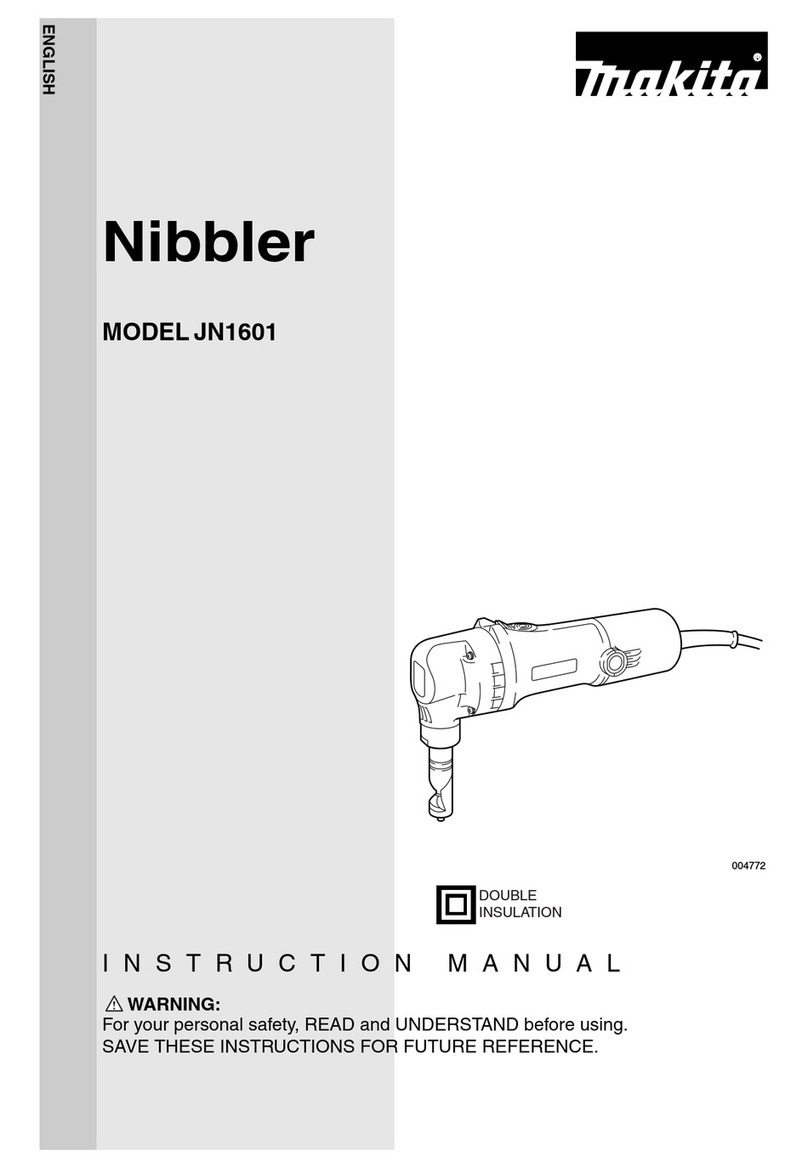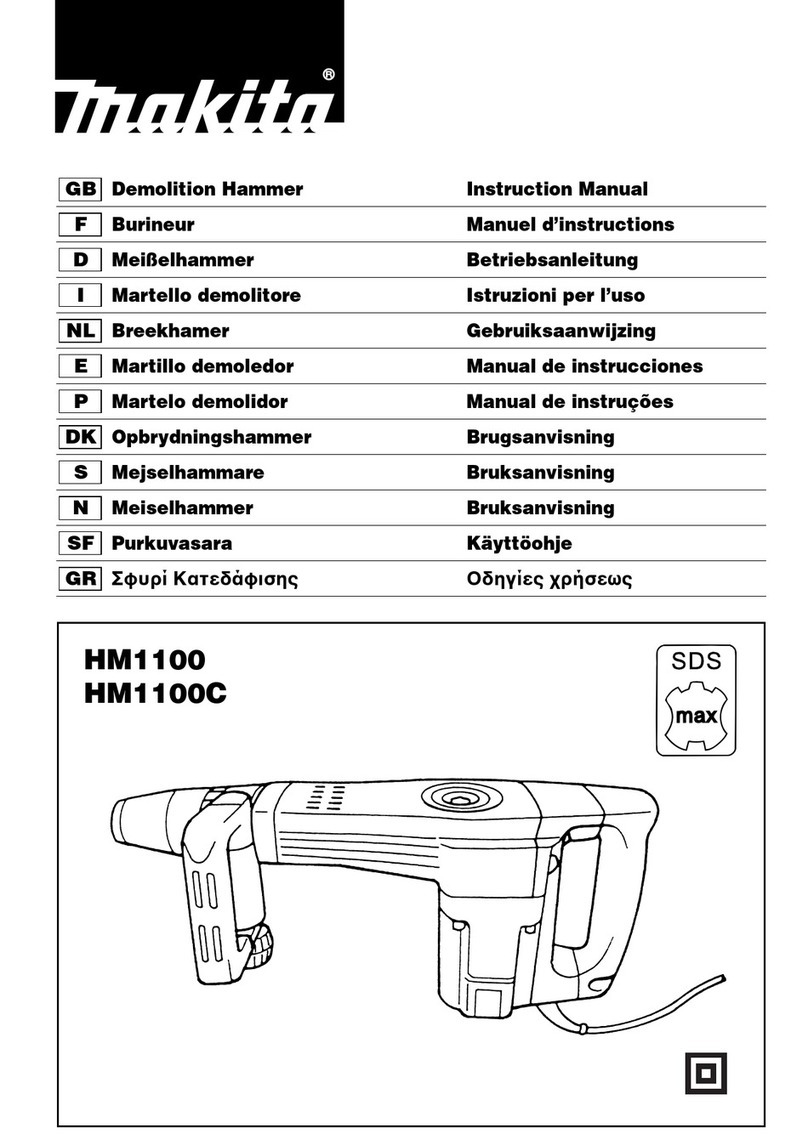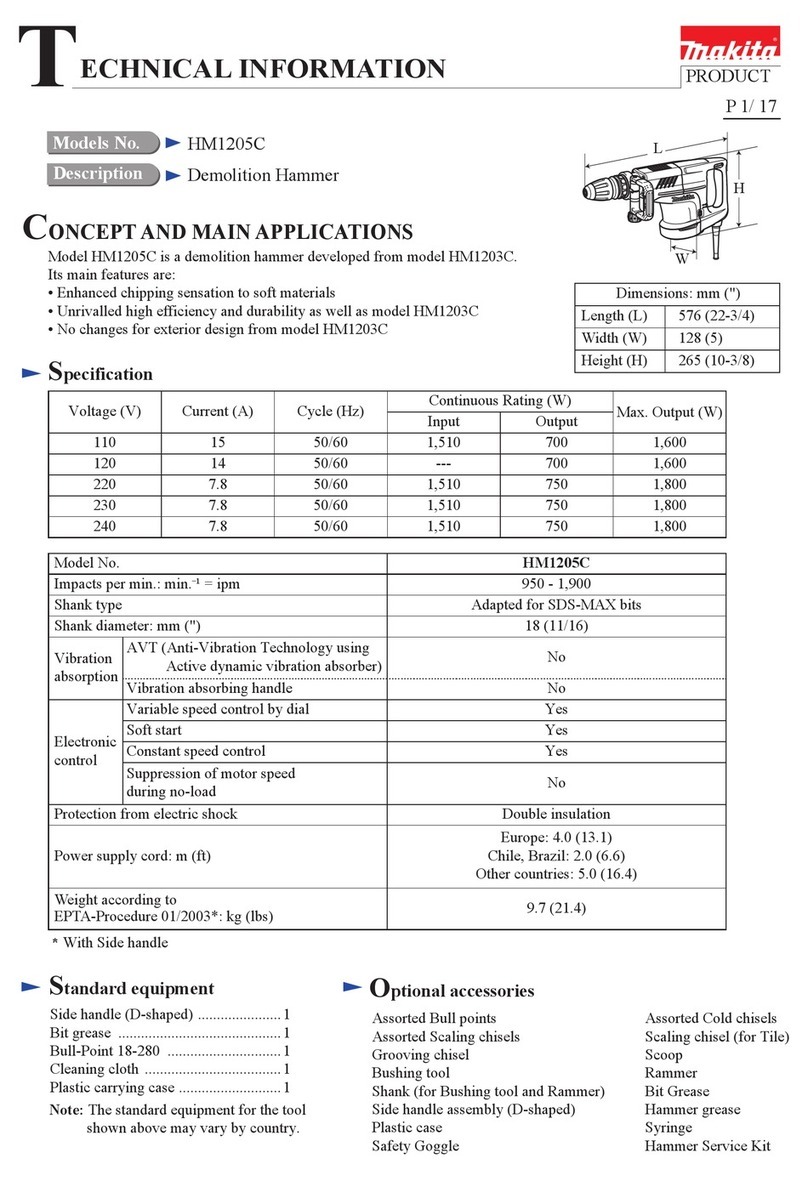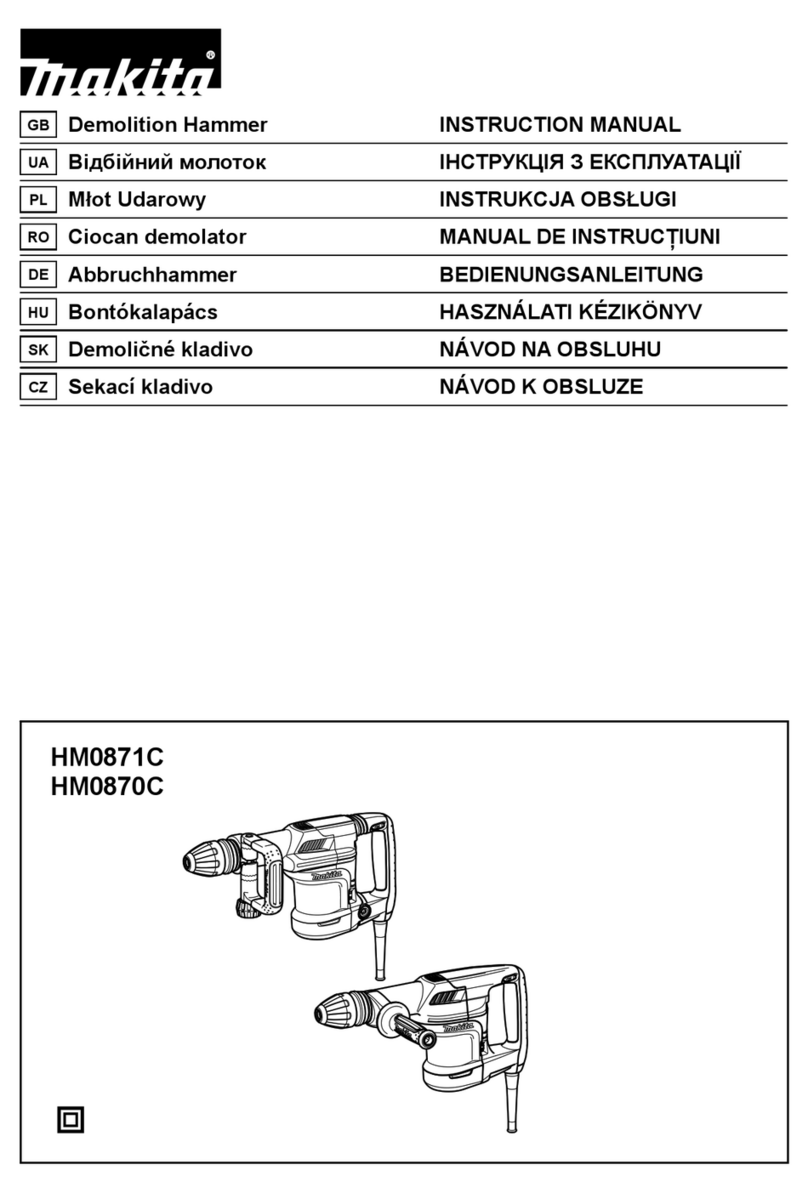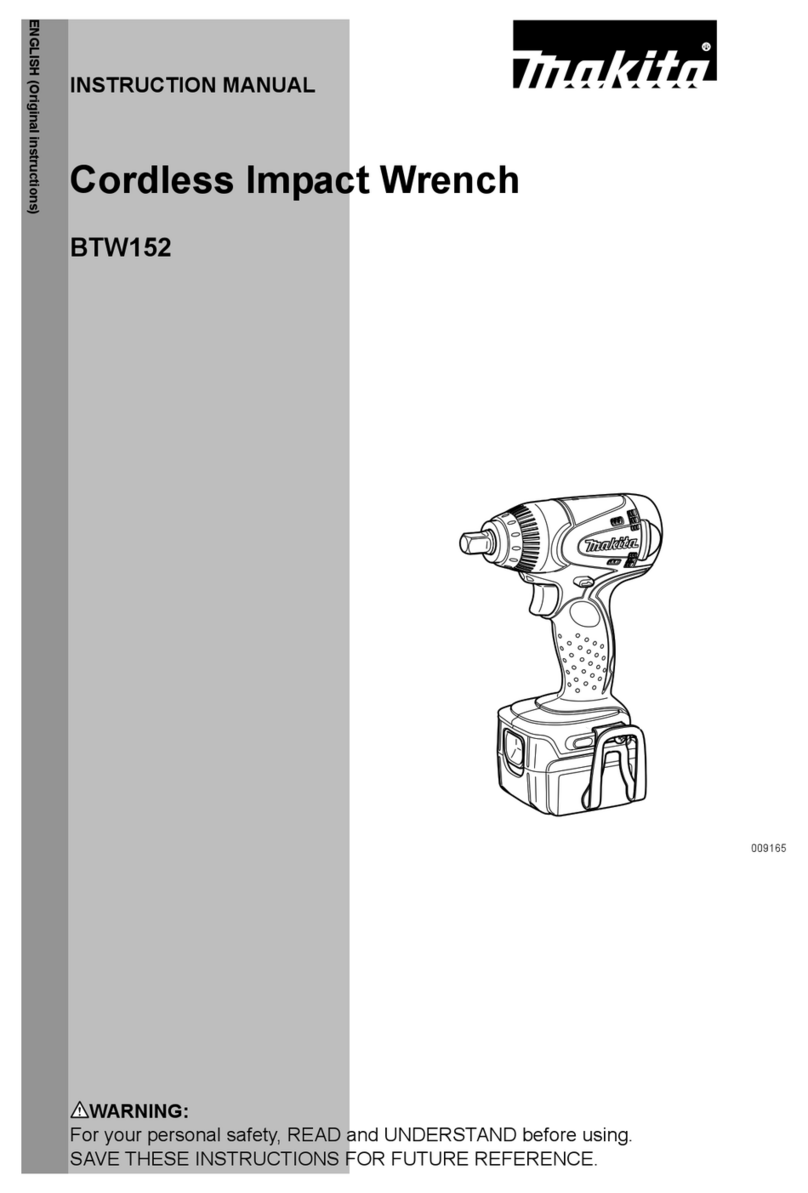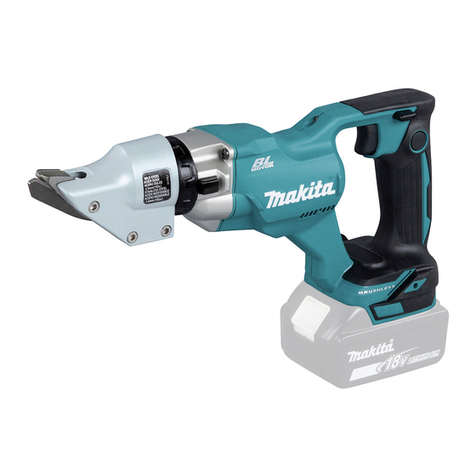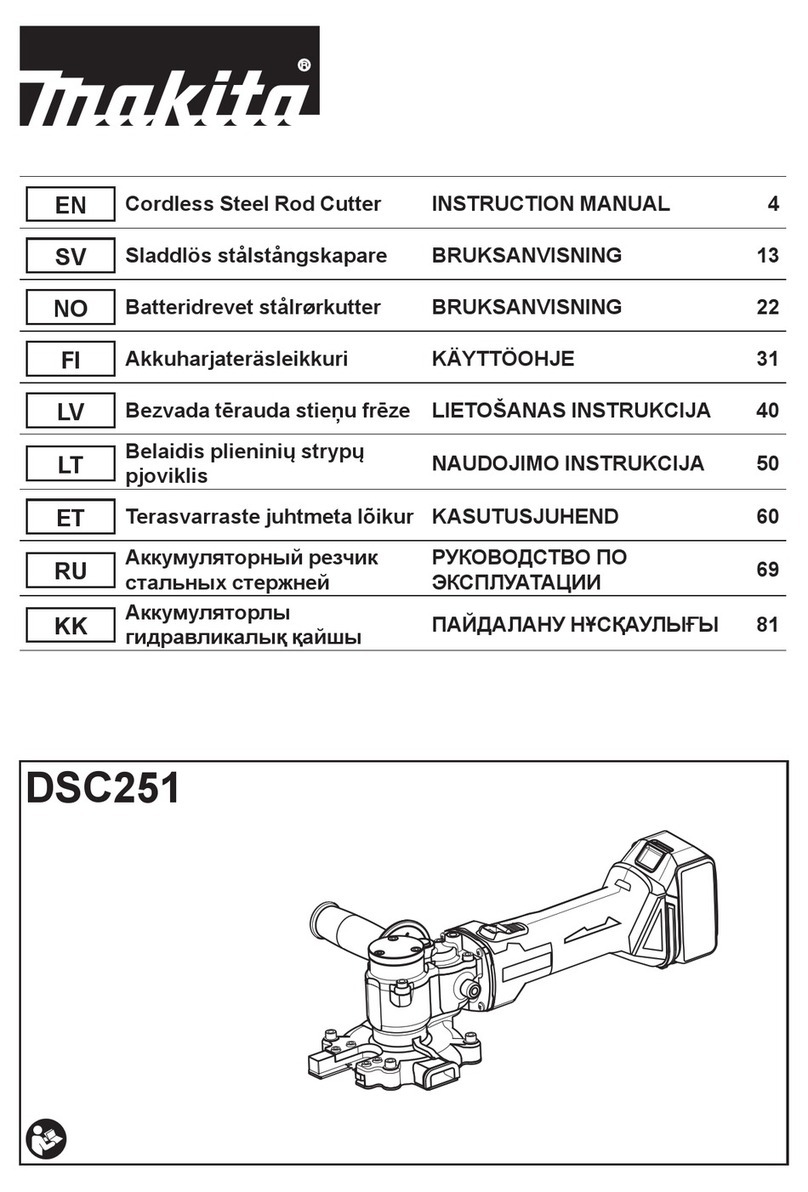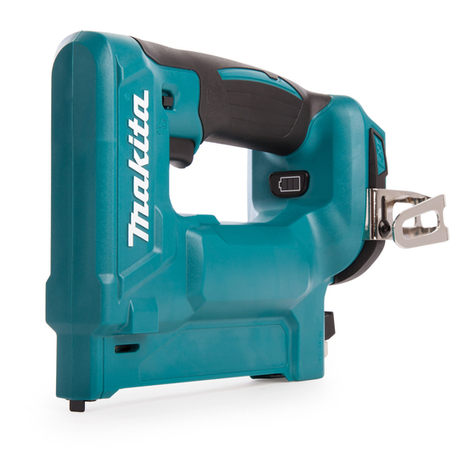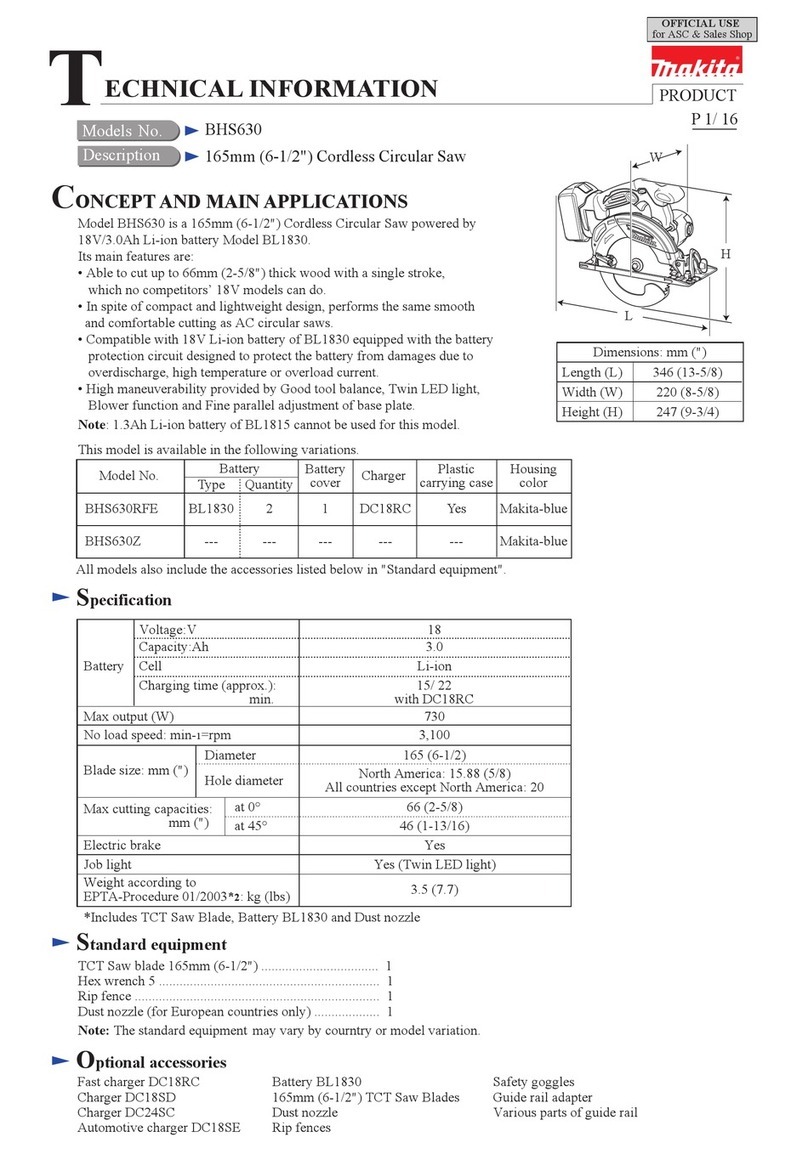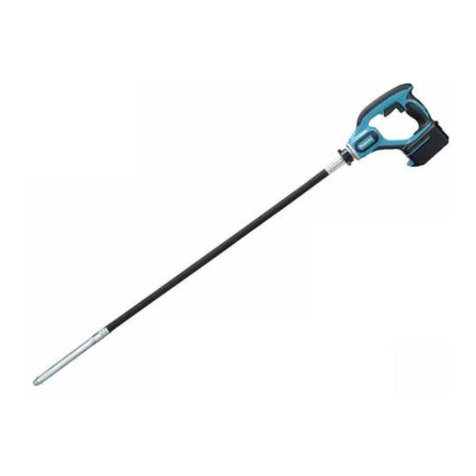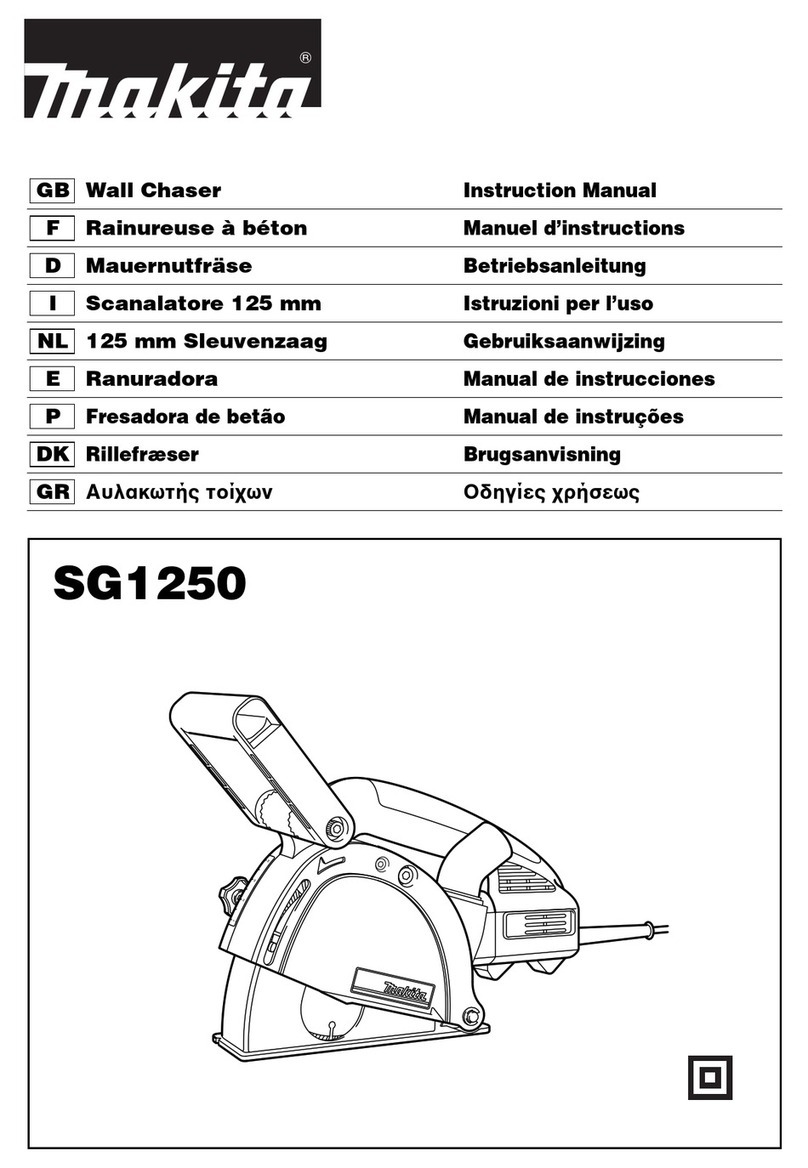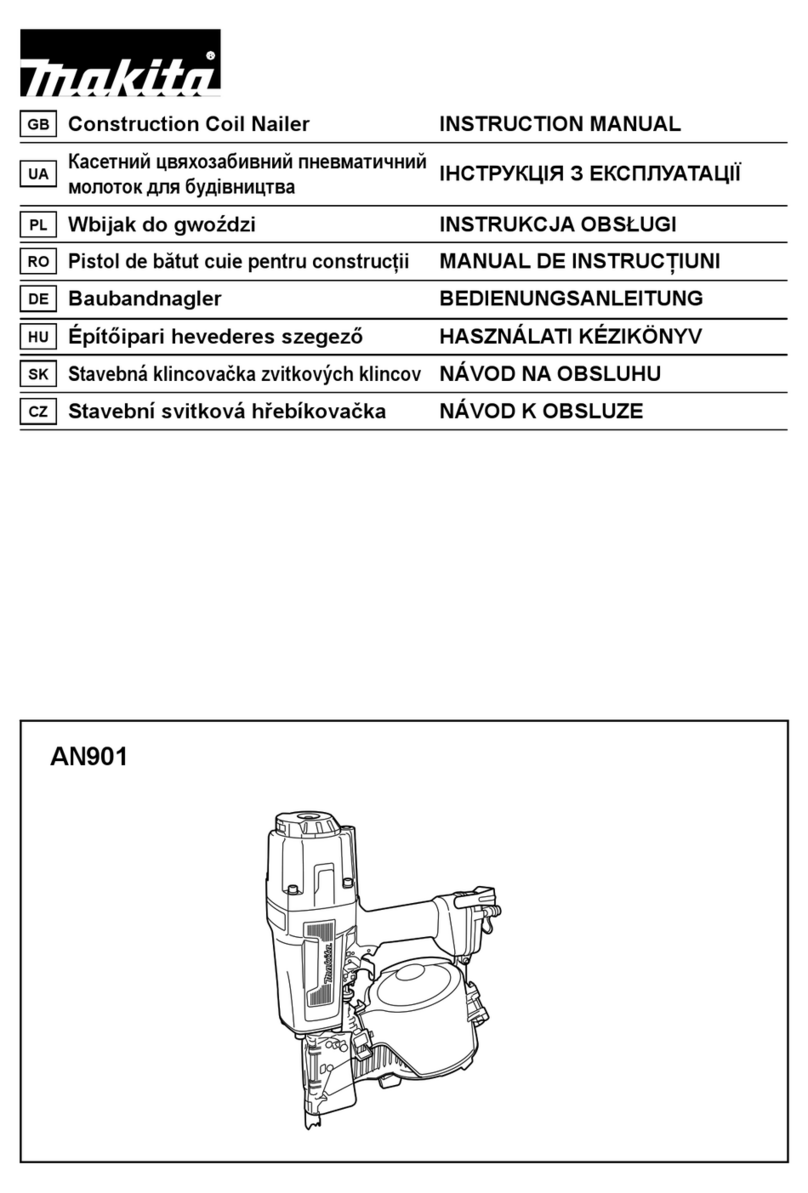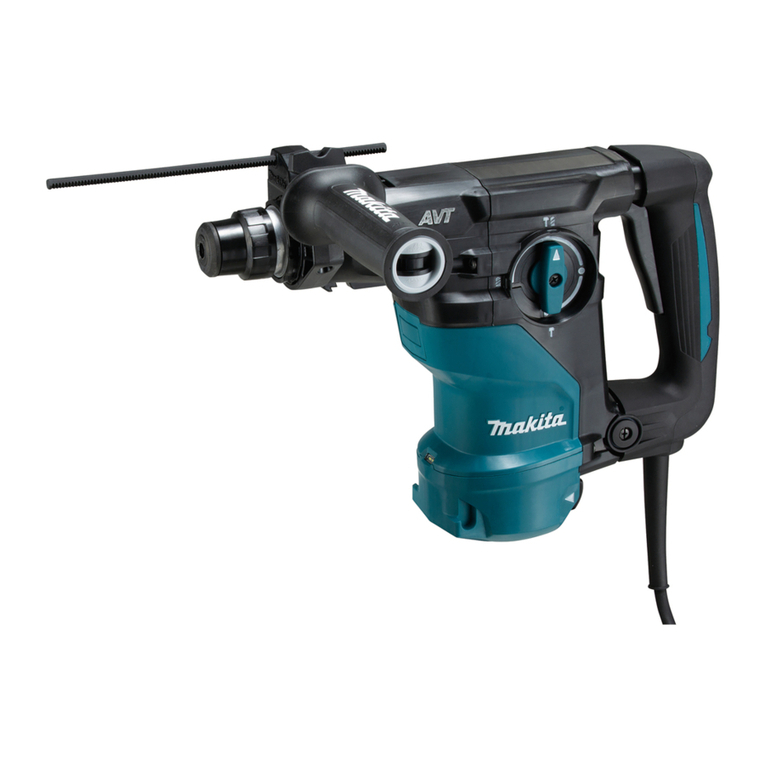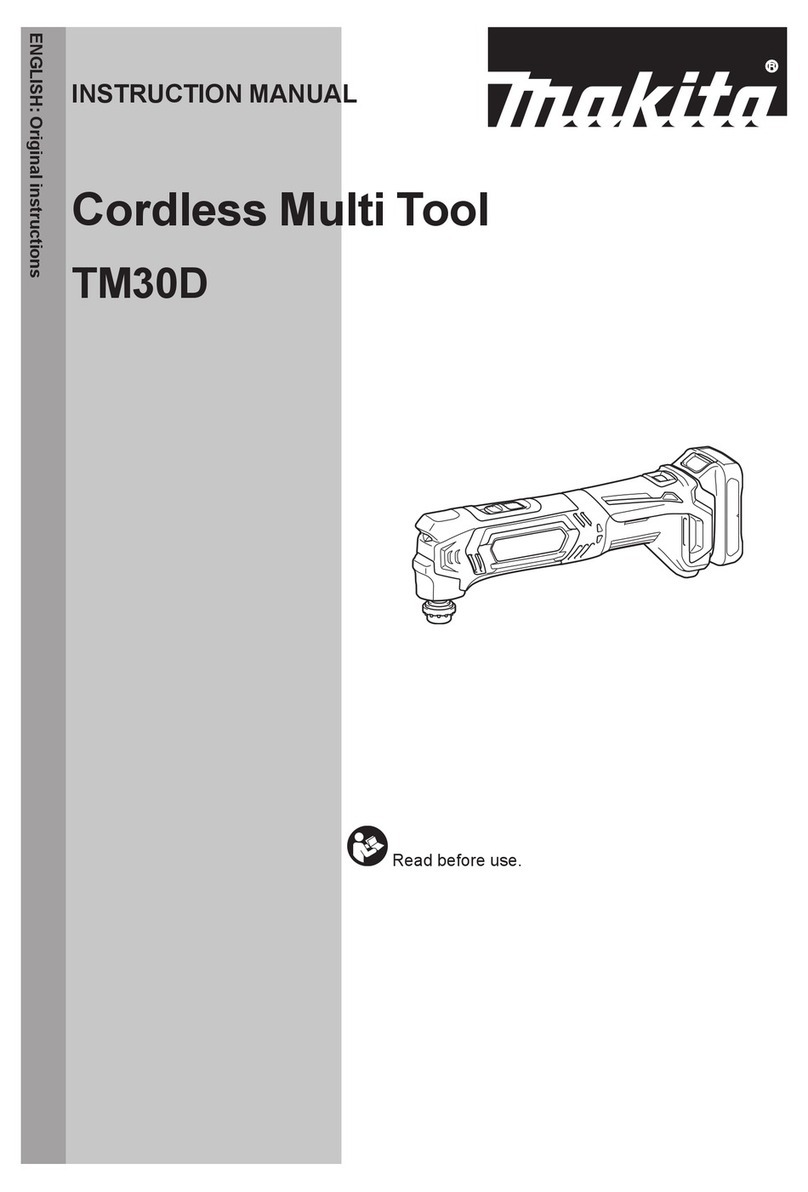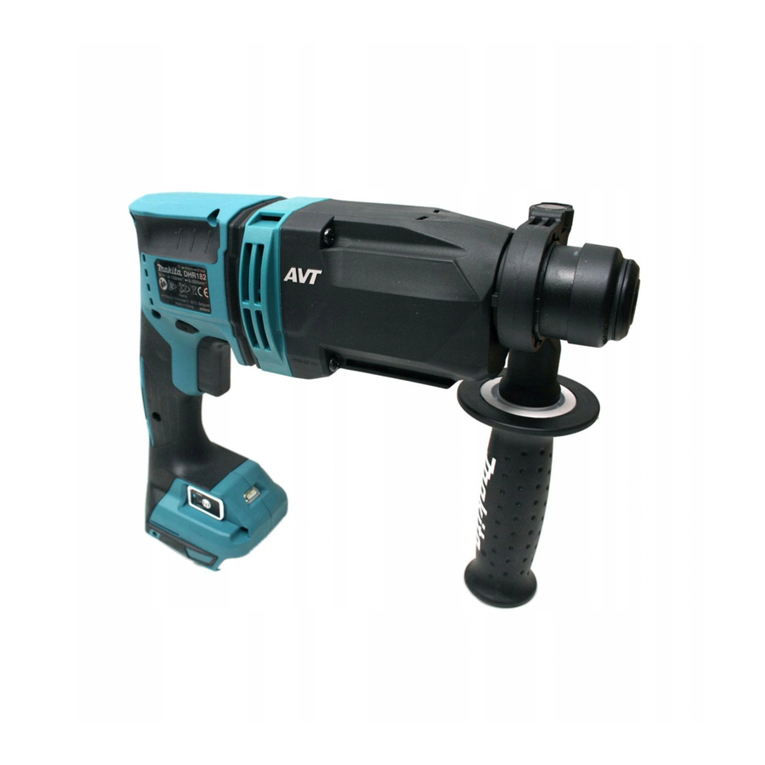
7ENGLISH
Personal safety
11. Stay alert, watch what you are doing and use
common sense when operating a power tool.
Do not use a power tool while you are tired or
under the inuence of drugs, alcohol or med-
ication. A moment of inattention while operating
power tools may result in serious personal injury.
12. Use personal protective equipment. Always
wear eye protection. Protective equipment such
as dust mask, non-skid safety shoes, hard hat, or
hearing protection used for appropriate conditions
will reduce personal injuries.
13. Prevent unintentional starting. Ensure the
switch is in the o-position before connecting
to power source and/or battery pack, picking
up or carrying the tool. Carrying power tools with
your nger on the switch or energising power tools
that have the switch on invites accidents.
14. Remove any adjusting key or wrench before
turning the power tool on. A wrench or a key left
attached to a rotating part of the power tool may
result in personal injury.
15. Do not overreach. Keep proper footing and
balance at all times. This enables better control
of the power tool in unexpected situations.
16. Dress properly. Do not wear loose clothing or
jewellery. Keep your hair, clothing, and gloves
away from moving parts. Loose clothes, jewel-
lery or long hair can be caught in moving parts.
17. If devices are provided for the connection of
dust extraction and collection facilities, ensure
these are connected and properly used. Use of
dust collection can reduce dust-related hazards.
Power tool use and care
18. Do not force the power tool. Use the correct
power tool for your application. The correct
power tool will do the job better and safer at the
rate for which it was designed.
19. Do not use the power tool if the switch does
not turn it on and o. Any power tool that cannot
be controlled with the switch is dangerous and
must be repaired.
20. Disconnect the plug from the power source
and/or the battery pack from the power tool
before making any adjustments, changing
accessories, or storing power tools. Such pre-
ventive safety measures reduce the risk of starting
the power tool accidentally.
21. Store idle power tools out of the reach of chil-
dren and do not allow persons unfamiliar with
the power tool or these instructions to operate
the power tool. Power tools are dangerous in the
hands of untrained users.
22. Maintain power tools. Check for misalignment
or binding of moving parts, breakage of parts
and any other condition that may aect the
power tool’s operation. If damaged, have the
power tool repaired before use. Many accidents
are caused by poorly maintained power tools.
23. Keep cutting tools sharp and clean. Properly
maintained cutting tools with sharp cutting edges
are less likely to bind and are easier to control.
24. Use the power tool, accessories and tool bits
etc. in accordance with these instructions, tak-
ing into account the working conditions and
the work to be performed. Use of the power tool
for operations dierent from those intended could
result in a hazardous situation.
Service
25. Have your power tool serviced by a qualied
repair person using only identical replacement
parts. This will ensure that the safety of the power
tool is maintained.
26. Follow instruction for lubricating and chang-
ing accessories.
27. Keep handles dry, clean and free from oil and
grease.
PLATE JOINER SAFETY WARNINGS
1. Blades must be rated for at least the speed
marked on the tool. Blades running over rated
speed can y apart and cause injury.
2. Always use the guard. The guard protects the
operator from broken blade fragments and unin-
tentional contact with the blade.
3. Hold power tool by insulated gripping sur-
faces, because the blade may contact its own
cord. Cutting a “live” wire may make exposed
metal parts of the power tool “live” and could give
the operator an electric shock.
4. Use only the blades specied for this tool.
5. Never operate the tool with the blade locked in
exposed position or without the blade cover
secured properly in place.
6. Make sure that the blade slides smoothly
before operation.
7. Check the blades carefully for cracks or dam-
age before operation. Replace cracked or
damaged blades immediately.
8. Make sure that the ange ts in the arbor hole
when installing the blade.
9. Inspect for and remove all nails or foreign
matter from the workpieces before operation.
10. Always place the workpieces on a stable
workbench.
11. Secure the workpieces rmly with clamp or
vise.
12. NEVER wear gloves during operation.
13. Hold the tool rmly with both hands.
14. Keep your hands and body away from the
grooving area.
15. Run the tool for a while without the blade
pointing toward anybody. Watch for vibration
or wobbling that could indicate poor installa-
tion or a poorly balanced blade.
16. Never reach your hands underneath the work-
pieces while the blade is rotating.
17. Do not leave the tool running unattended.
18. Always be sure that the tool is switched o
and unplugged before making any adjust-
ments or replacing the blade.
19. Some material contains chemicals which may
be toxic. Take caution to prevent dust inhala-
tion and skin contact. Follow material supplier
safety data.


